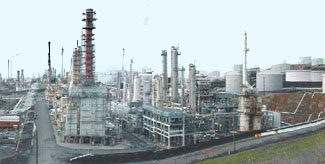Epstein Barr: Difference between revisions
imported>Dalia Yadegar No edit summary |
imported>Dalia Yadegar |
||
| Line 29: | Line 29: | ||
==Pathology== | ==Pathology== | ||
The Epstein-Barr Virus mainly replicates in the beta-lymphocytes and also can replicate in the epithelial cells of the pharynx and parotodid duct.Andersson JP. Clinical aspects of Epstein-Barr virus infection. Scand J Infect Dis Suppl 1991;80:94-104. | |||
Common symptoms are fever, pharyngitis, adenopathy, malaise, and an atypical lymphocytosis. [Bailey RE. Diagnosis and treatment of infectious mononucleosis. Am Fam Physician 1994;49:879-88.] | |||
How does this organism cause disease? Human, animal, plant hosts? Virulence factors, as well as patient symptoms. | How does this organism cause disease? Human, animal, plant hosts? Virulence factors, as well as patient symptoms. | ||
Revision as of 14:50, 5 April 2008
| The metadata subpage is missing. You can start it via filling in this form or by following the instructions that come up after clicking on the [show] link to the right. | |||
|---|---|---|---|
|
Articles that lack this notice, including many Eduzendium ones, welcome your collaboration! |
Classification
Higher order taxa
Domain; Phylum; Class; Order; Herpesviridae [Others may be used. Use Tree of Life link to find]
Species
Lymphocryptovirus Human herpesvirus 4
Description and significance
Describe the appearance, habitat, etc. of the organism, and why it is important enough to have its genome sequenced. Describe how and where it was isolated. Include a picture or two (with sources) if you can find them.
Genome structure
Describe the size and content of the genome. How many chromosomes? Circular or linear? Other interesting features? What is known about its sequence? Does it have any plasmids? Are they important to the organism's lifestyle?
Cell structure and metabolism
Describe any interesting features and/or cell structures; how it gains energy; what important molecules it produces.
Ecology
Describe any interactions with other organisms (included eukaryotes), contributions to the environment, effect on environment, etc.
Pathology
The Epstein-Barr Virus mainly replicates in the beta-lymphocytes and also can replicate in the epithelial cells of the pharynx and parotodid duct.Andersson JP. Clinical aspects of Epstein-Barr virus infection. Scand J Infect Dis Suppl 1991;80:94-104. Common symptoms are fever, pharyngitis, adenopathy, malaise, and an atypical lymphocytosis. [Bailey RE. Diagnosis and treatment of infectious mononucleosis. Am Fam Physician 1994;49:879-88.] How does this organism cause disease? Human, animal, plant hosts? Virulence factors, as well as patient symptoms.
Application to Biotechnology
Does this organism produce any useful compounds or enzymes? What are they and how are they used?
Current Research
Enter summaries of the most recent research here--at least three required

